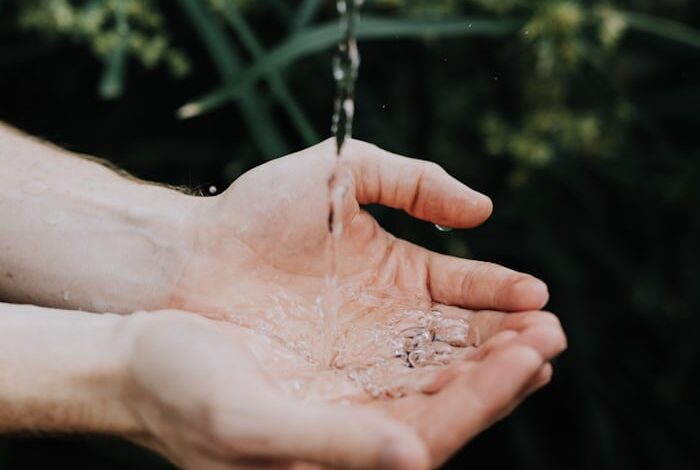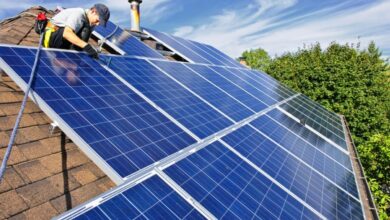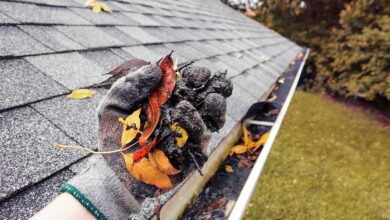Tips to Improve Low Water Pressure at Home

Are you tired of standing under a weak, trickling showerhead? Are you frustrated by the lack of water pressure in your faucets? Well, worry no more.
In today’s blog post, we’ll explore a range of tips to help you improve the low water pressure in your home. From checking for leaks and blockages to cleaning or replacing your shower head and even considering a water pressure booster pump, we have got you covered.
So, if you’re ready to transform your feeble streams into powerful jets, let’s dive in and discover the solutions to your low-water pressure woes. After reading today’s blog post, you can click the following link to learn how to deal with low water pressure in a house with a well.
Check For Any Leaks or Blockages
To improve water pressure at home, start by checking for leaks or blockages. Water pressure troubleshooting begins with identifying water pressure issues, and leaks or blockages are common culprits. Leaks can occur in numerous places, such as faucets, pipes, or even the water main.
One way to check for leaks is to turn off all the water sources in your home and observe the water meter. If it continues to run, it indicates a leak somewhere. Inspect faucets for any visible signs of leakage, like dripping or pooling water. Also, check the pipes for any corrosion, cracks, or loose connections. Addressing these issues can help restore water pressure.
Blockages can also affect water pressure. They can occur in pipes due to mineral deposits, rust, or debris build-up. Start by checking individual faucets for any blockages. Remove the aerator and clean it thoroughly. If the blockage persists, there may be a larger issue within the plumbing system. In this case, it is recommended that you seek professional help.
Another potential cause of low water pressure is the water pressure regulator. This device controls the water pressure entering your home. If it is faulty or set too low, it can lead to decreased water pressure. Consider checking and adjusting the water pressure regulator if necessary.
Clean or Replace The Showerhead
To improve your low water pressure, start by checking the condition of your showerhead. Mineral deposits can clog the tiny openings, reducing water flow. Cleaning the showerhead with vinegar or replacing it altogether can help restore optimal water pressure and give you a more satisfying shower experience.
Shower Head Maintenance
You can improve low water pressure at home by maintaining your shower head through regular cleaning or replacement. Showerheads play a crucial role in controlling water flow and pressure, so it’s essential to keep them in good condition. Here are some tips for maintaining your showerhead:
- Clean your showerhead regularly to remove mineral deposits that can clog the water flow. Simply unscrew the shower head, soak it in vinegar or a descaling solution, and scrub away any build-up.
- Consider replacing your showerhead with a water-saving model. Water-saving showerheads are designed to provide a satisfying shower experience while conserving water. They can help improve water pressure and reduce water usage, benefiting both your wallet and the environment.
- Regular showerhead maintenance ensures optimal performance and extends its lifespan. By keeping your shower head clean and well-maintained, you can enjoy a refreshing and invigorating shower every time.
Install a Water Pressure Booster Pump
Consider installing a water pressure booster pump to address low water pressure issues in your home. A water pressure booster pump can help increase the water pressure in your plumbing system, providing a more robust flow of water throughout your house. Here are some reasons why you should consider installing one:
- Improved water pressure: A water pressure booster pump can significantly improve the water pressure in your home, allowing you to enjoy a stronger and more consistent flow of water. This is especially beneficial if you have multiple bathrooms or appliances that require high water pressure to function properly.
- Easy installation: Installing a water pressure booster pump is relatively straightforward and can be done by a professional plumber. They will ensure that the pump is properly connected to your plumbing system and set up to provide the desired water pressure.
- Compatibility with existing systems: Water pressure booster pumps are designed to work with different types of plumbing systems, including those with a water pressure regulator. This means that you can easily integrate a booster pump into your existing setup without any major modifications.
Installing a water pressure booster pump is a practical solution to address low water pressure. However, before making a decision, it’s important to troubleshoot the cause of the low water pressure in your home. This will help determine if a booster pump is the appropriate solution or if other underlying issues need to be addressed. Consulting with a professional plumber can provide valuable insights and ensure that you choose the right course of action to improve your water pressure.



